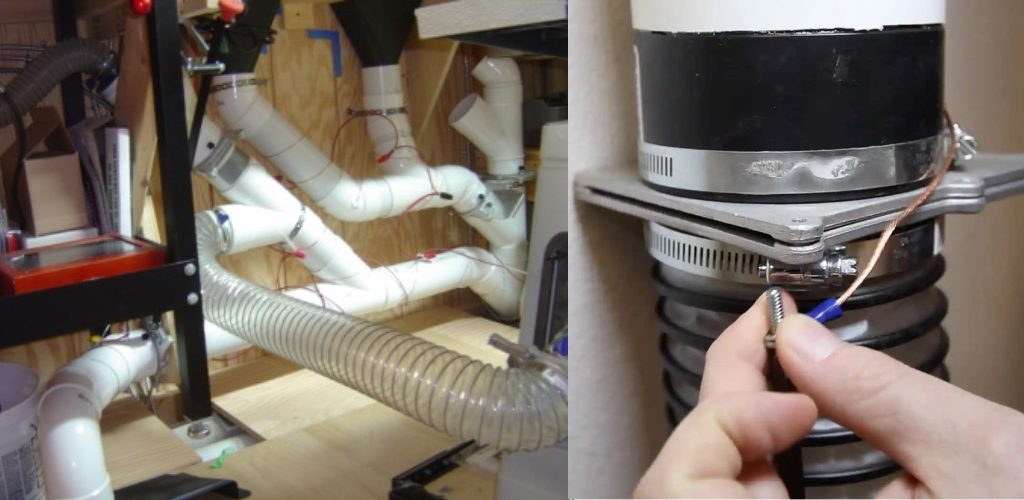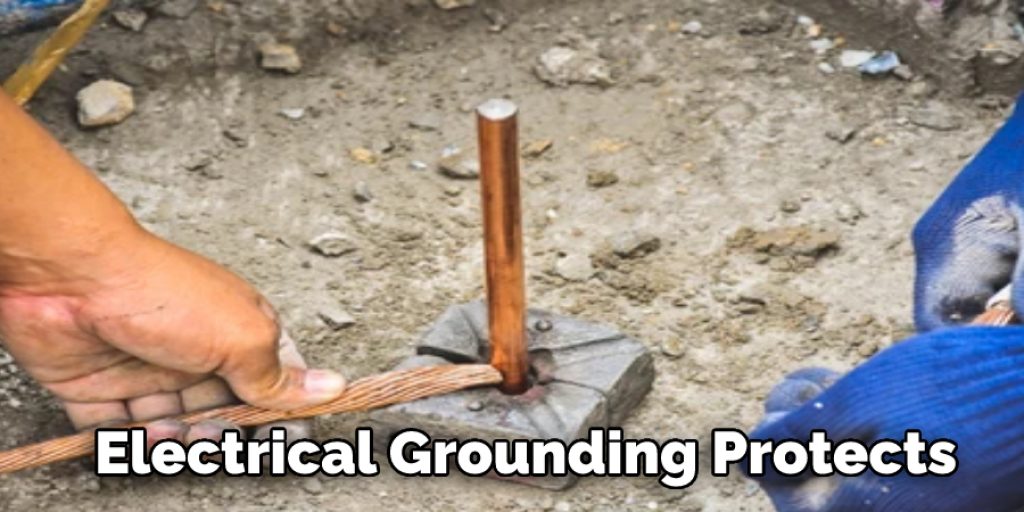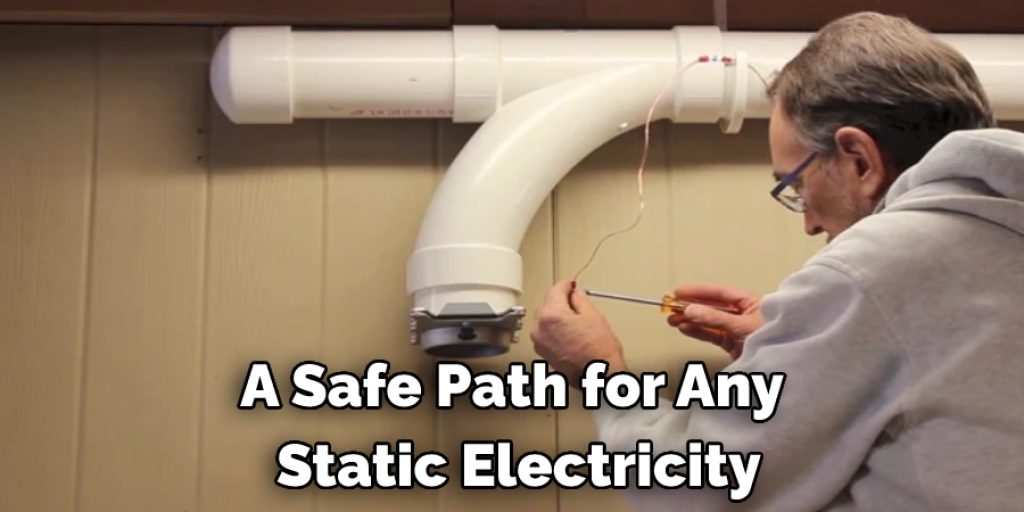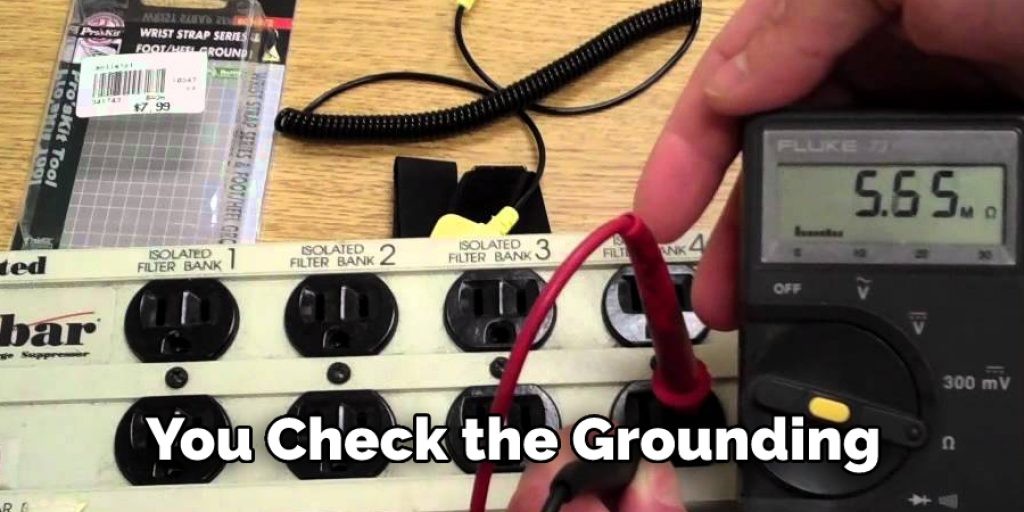How to Ground a Dust Collection System
If you are like many woodworkers, you rely on a dust collector to keep your shop clean. A properly functioning dust collection system is key to maintaining a safe and healthy work environment. However, if your dust collector is not properly grounded, it can create a dangerous situation. In this article, we will show you how to ground a dust collection system safely and effectively. Keep reading to learn more.

Many people believe that dust collectors do not need to be grounded because they are not electrical devices. However, this is not the case. Dust collectors can create static electricity, which can be dangerous if it builds up in the system. To ground a dust collection system, you will need a grounding rod. This can be purchased at most hardware stores.
What is Grounding?
Grounding is creating a conductive path between an electrical system and the earth. This provides a safe route for any stray electrical current to travel, preventing damage or injury. Grounding a dust collection system is essential for safety and performance.
An adequately grounded system will be safer to operate, as any stray current will be safely discharged into the earth rather than flowing through the operator. Additionally, a grounded system will also operate more efficiently, as any static charge that builds up in the system will be dissipated into the ground rather than interfering with the operation of the equipment.
Why Is Grounding Important for Dust Collection Systems?
Grounding is essential for any electrical system, but it’s especially critical for dust collection systems. Dust is an excellent conductor of electricity and can easily create a static charge. If that charge is not grounded correctly, it can lead to an electrical shock or fire.
There Are Two Types of Grounding That Are Important for Dust Collection Systems:
- Electrical grounding: This type of grounding protects against shocks by providing a path for electricity to flow in the event of a short circuit.
- Static grounding: This type of grounding prevents static build-up by dissipating any charges accumulating on dust particles.
Both types of grounding are essential for the safe operation of a dust collection system. Here’s a closer look at each kind of grounding and how to achieve it.
Electrical Grounding
As its name suggests, electrical grounding protects against electrical shocks by providing a path for electricity to flow in the event of a short circuit. To be effective, an electrical ground must be made of a conductive material that can easily carry current, such as copper or aluminum.

The most common way to electrically ground a dust collection system is to connect the system’s metal components to a grounding rod buried in the ground. This will provide a low-resistance path for any stray electricity to follow, preventing it from causing damage or injury.
Static Grounding
Static grounding is more complicated than electrical grounding, but it’s just as important. Static electricity can build up on dust particles, and if those particles are not properly grounded, they can become a fire hazard.
To static ground a dust collection system, you’ll need to connect the system’s metal components to a grounding rod buried in the ground. In addition, you’ll need to install static-dissipating devices, such as static brushes or static plates, on the ductwork leading into and out of the collector. These devices will help dissipate any static charge that may build up on the dust particles.
With proper grounding, your dust collection system will be safe to operate and pose no danger to you or your property.
What You’ll Need:
- A dust collection system
- A grounding rod
- A grounding clamp
- Electrical tape
- Wire cutters
- A hammer
- An electrical outlet
A Step by Step Guide on How to Ground a Dust Collection System
Step 1: Determine the Location of Your Grounding Rod
The first step is to determine the location of your grounding rod. This is typically done by finding the main water line coming into your home and measuring 10 feet away from it in a straight line. Once you have found the 10-foot mark, drive the grounding rod into the ground at that point.
Step 2: Attach the Grounding Clamp to the Rod
Next, take your grounding clamp and attach it to the rod. Make sure that the clamp is tightened securely not to come loose.

Step 3: Cut a Piece of Wire
Cut a piece of wire that is long enough to reach from the grounding rod to the dust collection system. It is vital to make sure that the wire is long enough so that you will not have to splice it together.
Step 4: Strip the Wire
Strip the wire to easily attach it to the rod and the dust collection system. Be sure to leave enough of a length on the wire so that you can work with it easily.
Step 5: Attach the Wire to the Grounding Rod
Use electrical tape to attach the wire to the grounding rod. Make sure that the connection is secure and will not come loose.
Step 6: Attach the Other End of the Wire to the Dust Collection System
The final step is to attach the other end of the wire to the dust collection system. Once again, use electrical tape to ensure that the connection is secure.
Now that you have grounded your dust collection system, you can rest assured that it is safe to use. However, if you have any questions about this process or need help grounding your system, don’t hesitate to get in touch with a professional. These steps will help in how to ground a dust collection system.
Some Common Mistakes and How Can You Avoid Them
One common mistake people make when grounding a dust collection system is not attaching the ground wire to the metal frame of the system. If the ground wire is not connected to the metal frame, it will not be properly grounded.
Another common mistake is not using a proper size or type of wire for the ground connection. The wrong size or type of wire can create a resistance that can cause the current to back feed through the system and potentially damage sensitive electronic components.

Finally, another common mistake is not connecting the ground wire to a grounding rod driven into the earth. This will allow any static electricity to dissipate safely into the earth instead of building up in the system.
To avoid these mistakes, make sure to attach the ground wire to the metal frame of the system and use an appropriately sized and rated wire for the application. In addition, be sure to connect the ground wire to a grounding rod driven into the earth to provide a safe path for any static electricity. These simple tips will help ensure your dust collection system is properly grounded and safe from damage.
Safety Measures
There are several other safety measures you should take when using a dust collection system:
- Wear proper clothing and Personal Protective Equipment (PPE): This includes wearing a dust mask or respirator, gloves, and eye protection.
- Keep the area around the dust collector clean: This will help prevent any combustible materials from accumulating and igniting.
- Inspect the system regularly: This will help identify any potential hazards and allow you to fix them before they become a problem.
- Follow the manufacturer’s instructions: This is important for both the safe operation of the system and maintaining its warranty.
How Often Should You Check the Grounding on Your Dust Collection System?
Dust collection systems are an essential part of many businesses and homes. They help keep the air clean and free of dust and other particulates that can cause respiratory problems and other health issues. However, dust collection systems can also pose a serious fire hazard if not adequately grounded.
A dust collection system uses a high-powered fan to suck up dust and debris from the air. The debris is then collected in a bag or container. If the system is not grounded correctly, the fan can create static electricity that can ignite the dust and debris, causing a fire.
It is essential to regularly check the grounding of your dust collection system to prevent this from happening. You should also make sure that the system is grounded correctly before turning it on.

If you are not sure how to check the grounding of your dust collection system, you can contact a professional for help. They will be able to inspect the system and make sure that it is properly grounded.
Checking the grounding of your dust collection system is an integral part of keeping it safe and efficient. You can help prevent fires and ensure that your air is clean and free of dust and other particulates.
Conclusion:
We hope this article has helped you understand how to ground a dust collection system in your shop. Remember that safety is the number one priority for woodworking, and following these guidelines will help keep you safe while you work.
You can check it out to Does a Touch Plate System Work




